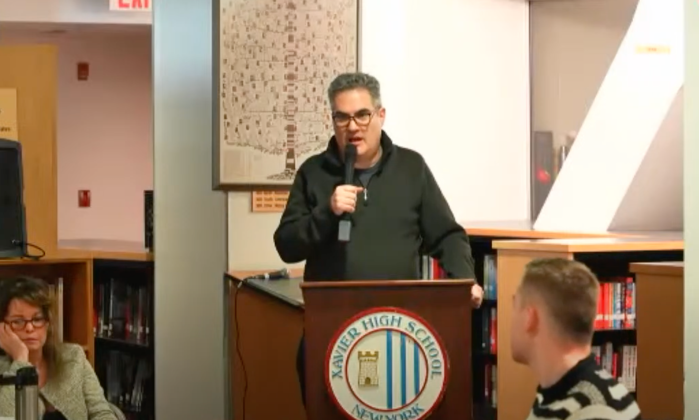New York City Department of Parks and Recreation urban park rangers on Nov. 21 began leading guided tours of Hart Island. Since 1869, the island has been the burial place for the bodies of thousands of unclaimed, unknown or indigent people — including many people who died during the height of the AIDS crisis in the 1980s and ’90s.
New Yorkers interested in visiting the island can sign up on the Parks Department website for 2.5 hour tours, offered generally on select Tuesday mornings. The tours have a maximum capacity of 30 people, and tickets may be distributed by lottery.
Melinda Hunt, president and founder of the Hart Island Project — which has long advocated making the island publicly accessible — said she experienced the tour for herself, but it fell short of her expectations. She said the tour does not include the southern portion of Hart Island where there are many graves of people lost to AIDS.
“They talk about the AIDS burials, but they don’t take you to it,” she said. “It’s completely unacceptable that no one can visit these sites.”
Starting in the mid-1980s and through the 1990s, many people who died of AIDS-related complications were buried on Hart Island. According to the Hart Island Project’s research, at least 31 adults and one infant lost to AIDS whose identities were unknown were buried in graves 14 feet deep on the southern portion of the island due to stigma surrounding the epidemic. Those individuals, many of them part of the LGBTQ community, began to be buried in common graves starting in 1987, and were all located in the southern portion of the island starting in 1989. Since 2014, the relatives of people buried on Hart Island have been granted permission to visit under supervision.
In 2019, the City Council passed legislation transferring control of Hart Island from the New York City Department of Corrections to the Parks Department with the intent of opening access to the general public. Two other bills required the Department of Transportation to develop a plan to make transportation to the island more accessible, and for the Department of Social Services to provide public information and resources to people about their loved ones buried on the island.
The island was transferred to the parks department in 2021. In a statement emailed to Gay City News, Parks Commissioner Sue Donoghue said, “We’re thrilled to begin offering free public history tours of Hart Island, allowing New Yorkers an intimate look at the island for the very first time. Our Urban Park Rangers have created informative and reflective programming that highlights the island’s important role in New York City history.”
“As Hart Island will continue to be the City’s main burial ground for the foreseeable future, we’re also pleased to unveil, in collaboration with sister agencies, the positive improvements and beautification efforts that have taken place to improve the experience at gravesite visits for those visiting loved ones buried on the island,” the statement reads.
A spokesperson for the Parks Department added that there are no current plans to increase the frequency of tours to the island, but “programming is always under evaluation.” The southern portion of the island is still an active burial ground, they said, but the department is exploring the possibility of providing tours of that area as well.
Hunt said she is pleased there are now public tours, adding, “It’s better than nothing.” Still, she would like for more to be done.
“I think it’s important that we recognize the horror that people suffering from HIV experienced, not just in terms of the disease, but in terms of discrimination,” Hunt, herself an ally to the LGBTQ community, said. “I’m still suffering from what happened to my friends, from what happened to the LGBTQ community … and I would like to be able to visit those graves on World AIDS Day.”
To her, the current level of access to the island “is not reconciling history.”
Public tours of Hart Island will be held in 2024 on Jan. 16, Jan. 30, Feb. 13, Feb. 27, March 12, March 26, April 9, April 23, May 14 and May 28. You can visit the parks department’s website to sign up. The Hart Island Project has developed an interpretive guide and search tool for people to search for information about their loved ones buried there since 1980.



































